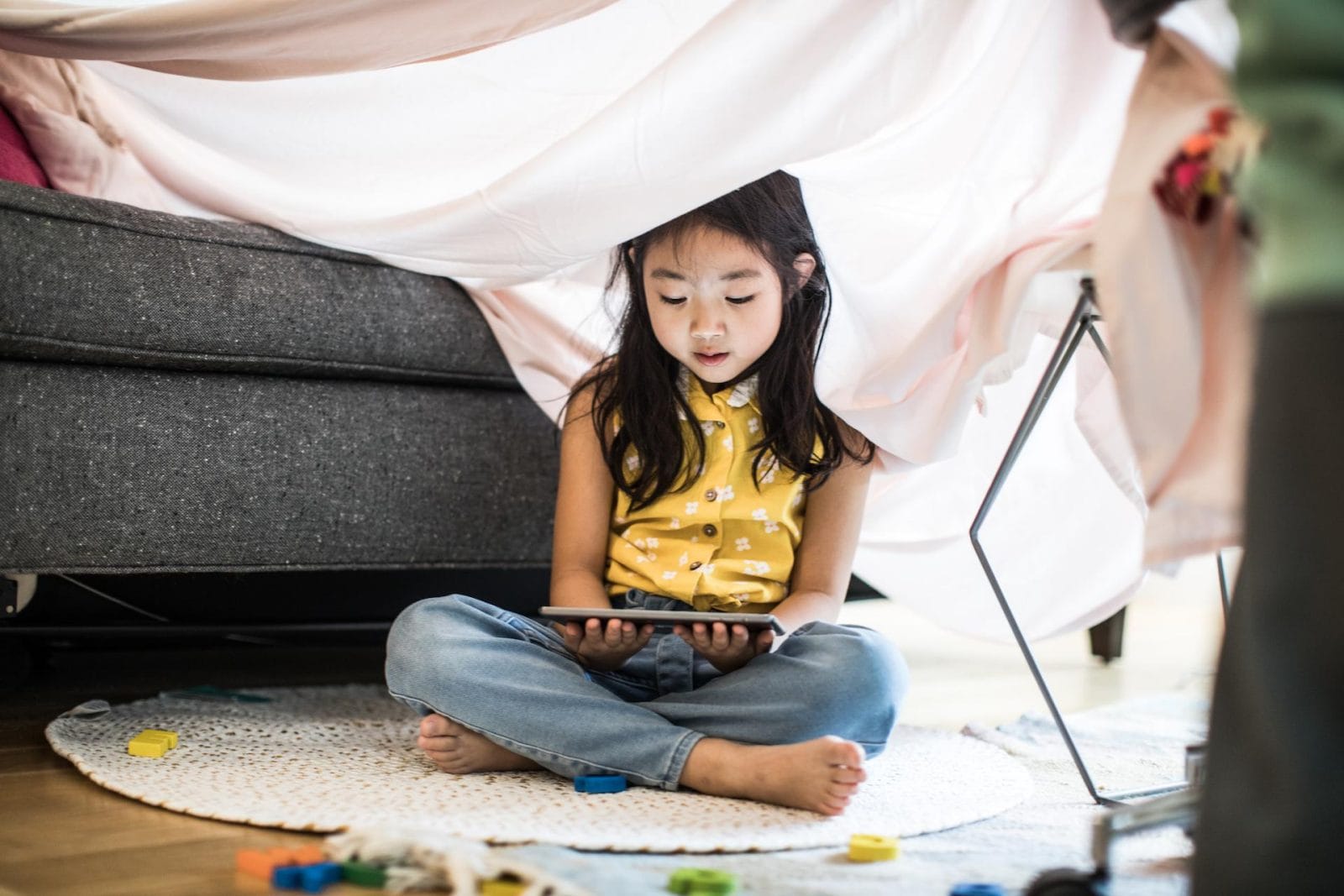Unpopular opinion: I don’t regulate screen time

I know it's not a 'one-size-fits-all' solution, but hear me out.
We’re raising children that are digital natives—they’ve never known a world without touch screens and they never will. While I definitely do not believe one screen time strategy fits all, I do believe it’s possible to peacefully coexist with your child’s iPads and Kindles without stringent policing.
For the time being, I don’t place limits on my five-year-old’s screen time and I never have. Maybe it won’t always be that way, maybe it will. But here’s why I don’t regulate it.
Mixing correlation and causation
Since children first began using technology in ways our generation and previous generations hadn’t, we’ve been hearing about the perils of “too much” screen time: poor sleep, vision problems, poor grades, and—a huge dog whistle for our fatphobic society—childhood obesity. And while there is evidence that higher levels of screen time can have a negative effect on health, it’s also important to remember that correlation does not imply causation. Just because there is a correlation between two variables doesn’t mean there is an accurately deduced cause-and-effect relationship between them.
There is also evidence to show that depressed people are simply just on their screens more. I’ve suffered from depressive episodes throughout my entire life and when I’m in one, I know I gravitate toward my phone and TV more than I do when I’m not depressed. One UK study shows that spending time looking at screens is not intrinsically bad for children’s health. The study recommends parents ensure their kids are getting enough sleep, exercise, and family interaction outside of their phones, tablets, and computers.
It’s perfectly possible to balance all of these things. Everything in moderation, right?
The value of staying connected
It’s become clear just how valuable technology has been to everyone during the past year. We’ve been able to stay connected to family members and friends through FaceTime, sending and receiving videos, and Zoom playdates. Hundreds of thousands of kids were able to effectively learn from home during the 2020-21 school year. Additionally, if you’ve spent the past year working from home, chances are you’ve been thankful for technology to occupy your kids when you have a meeting, etc. And you shouldn’t feel bad about that.
Screens are here to stay, whether we personally like it or not. And allowing our kids to explore technology and learn through it is not only giving them tools they can already use, but it’s also keeping them prepared for their future. Our kids won’t ever have the learning curve we had when it comes to technology. It’ll be part of their lives and their education forever, and almost certainly a necessary component to their future jobs.
Instead of regulating how much time my child spends on her iPad, I focus on parental controls and controlling the content instead. And honestly, whether she’s enthralled with a JoJo Siwa video on YouTube Kids or learning phonics from ABC Mouse, it brings her joy. And it’s hard to want to crack down on that.
Restrictions = obsession
As a parent, I’ve learned that anytime I’ve given something a firm “no” (as long as it wasn’t directly harmful to my child or others, of course), it fuels her desire to have The Thing even more. By placing a huge value on her iPad through setting timers or making her feel bad about watching it, I’m increasing the value of it instead of simply allowing it to just be part of her day. And because of that, she uses it to unwind after playing when she’s tired (we’re long past the nap stage of her life), to watch a movie on a rainy afternoon, or to look something up she wants to learn about. Her interest usually wanes after 20-25 minutes max, and she moves on to something else. She’s self-regulating because I stopped thinking of it as something to strictly regulate myself.
And think about it: What do we, the grown-ups, use our screens for? We binge Netflix shows when we want some downtime. We scroll through TiKTok for an hour at the end of a busy day. We catch up with family and friends online. We look up recipes, articles and our favorite movie clips. We use it to unwind, yes, but we also use it to learn and connect.
So do our kids. The old saying “do as I say, not as I do” is an annoying adage applied to parenting for eons, but it’s 100% accurate for a reason.
Also, some kids are genuinely interested in computers and video games and “indoor” things more than outdoor things like sports. There’s no arguing that being outside and getting fresh air and exercise is important. The benefits of outdoor activity are practically infinite. I just think if your kid wants to sit inside for a bit on their screens, there are worse things. Let kids like what they like. Encourage them to try new things, moderate what you can and should, and give them a good balance of other activities.
No limits doesn’t mean no rules
By skipping the power struggle over screen time, I hope to build a mutually trustworthy relationship between my children and myself when it comes to their internet activity. You can have rules about screen time without having to limit it (parental controls and no screens during family dinners are big ones over here).
This may not work for every family every child. But it works for us right now and I’m grateful for one less point of contention during an already stressful year.


































